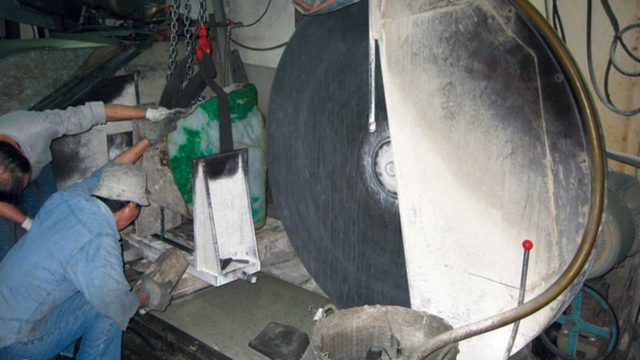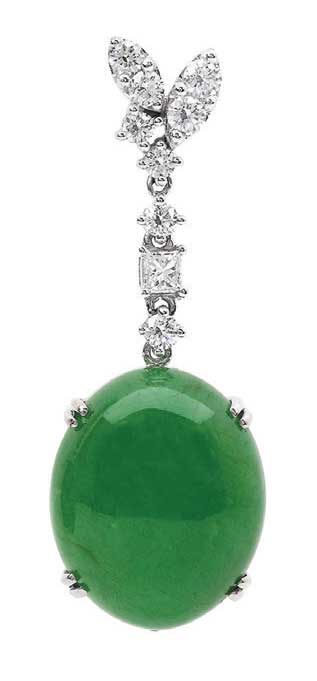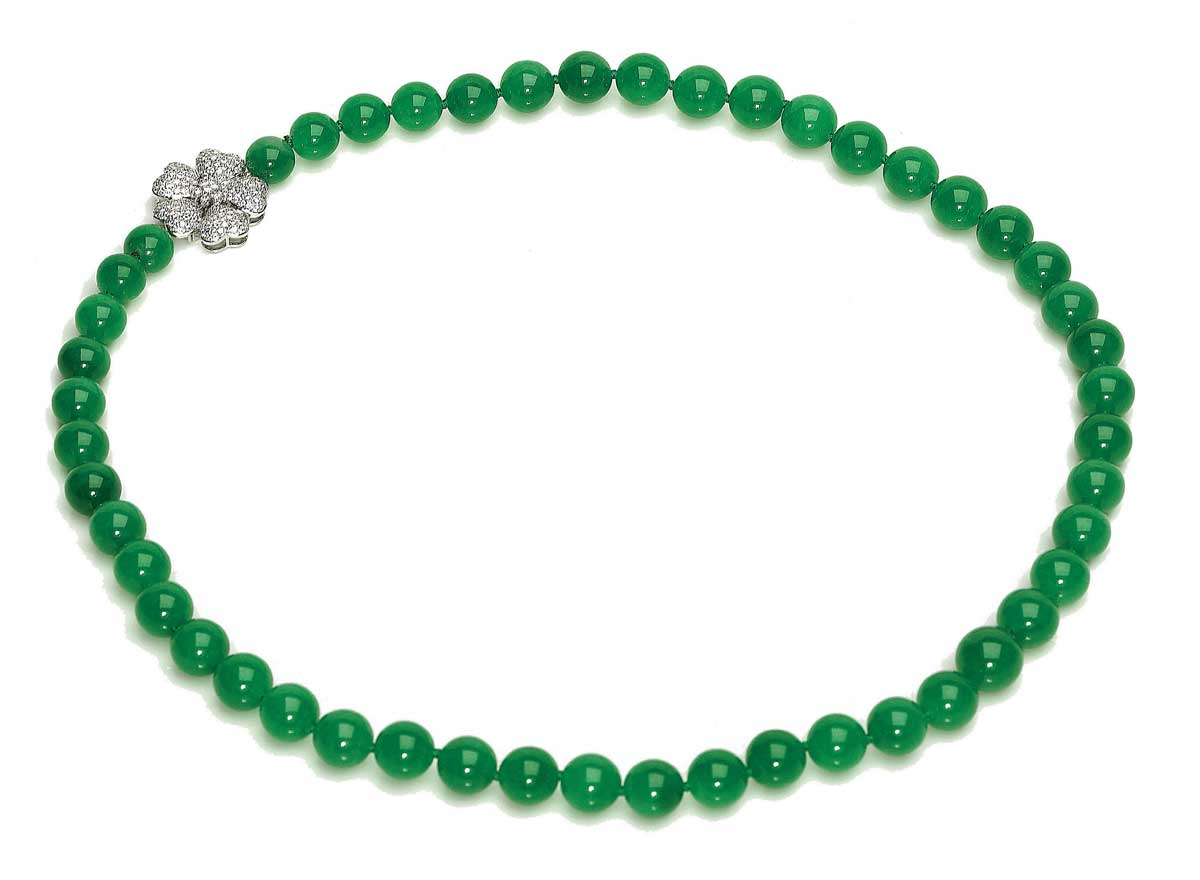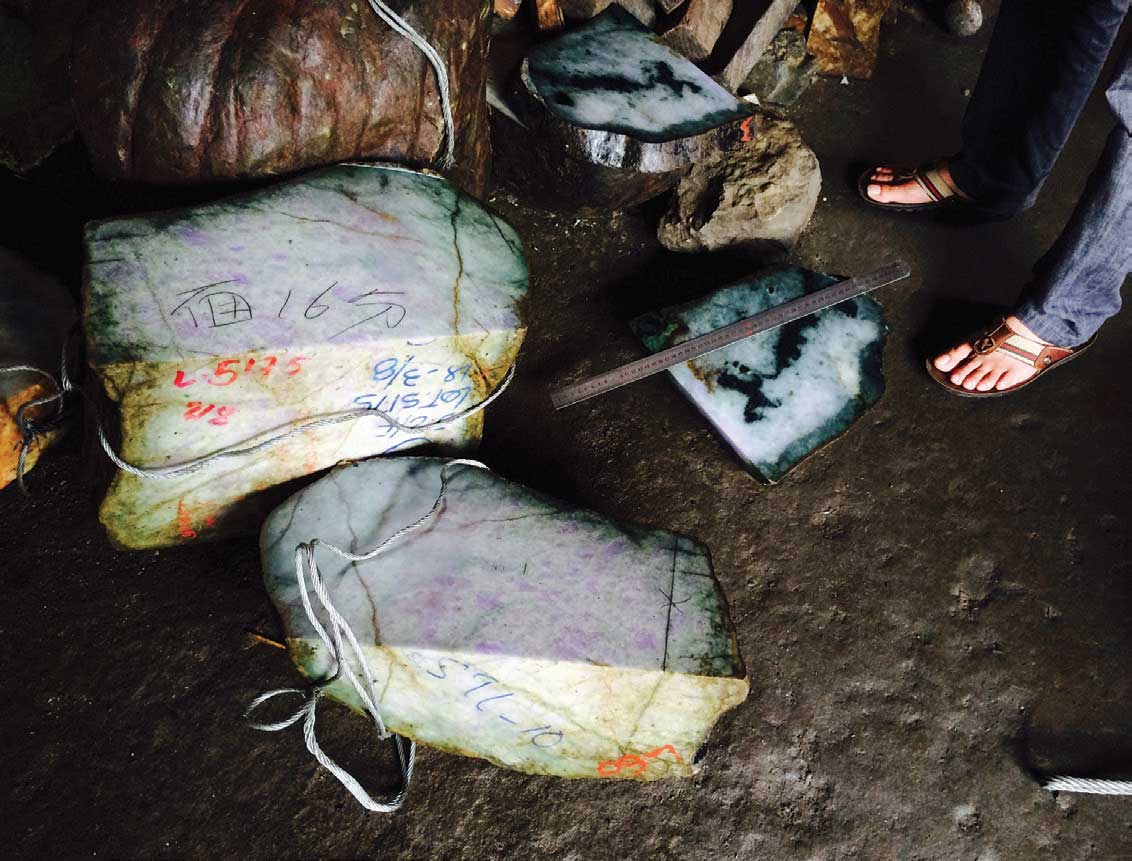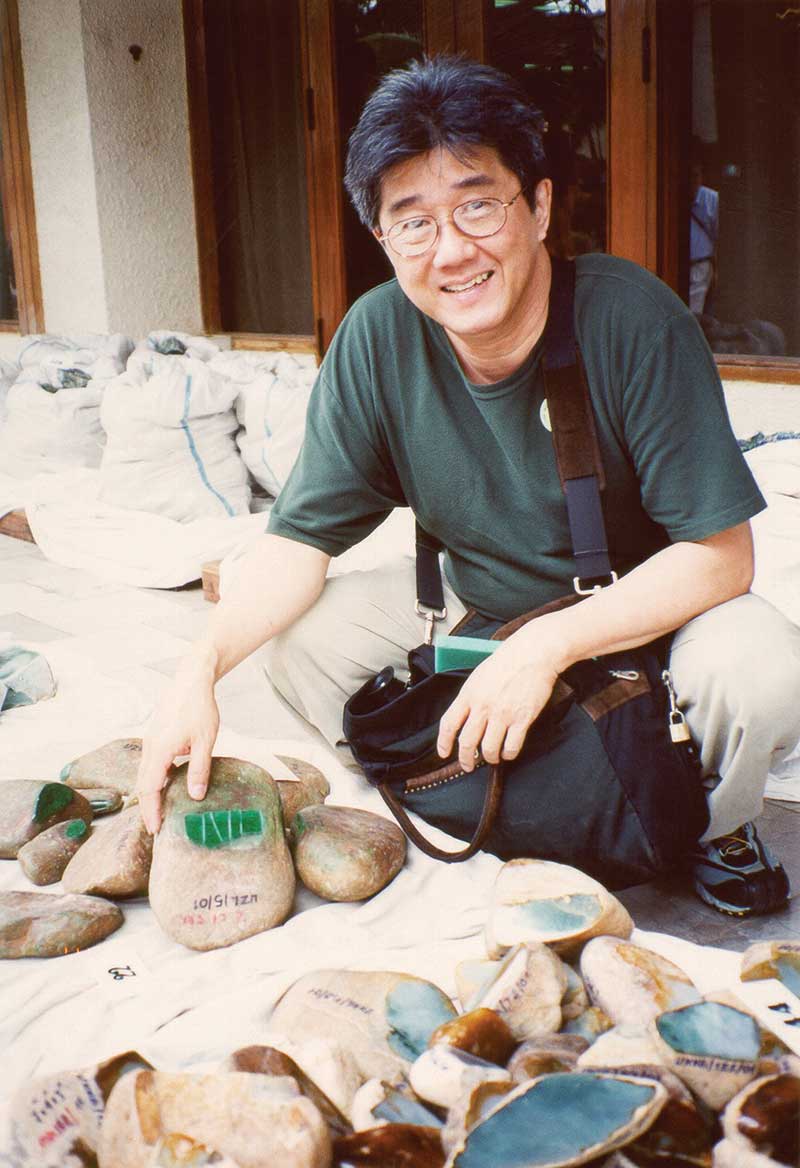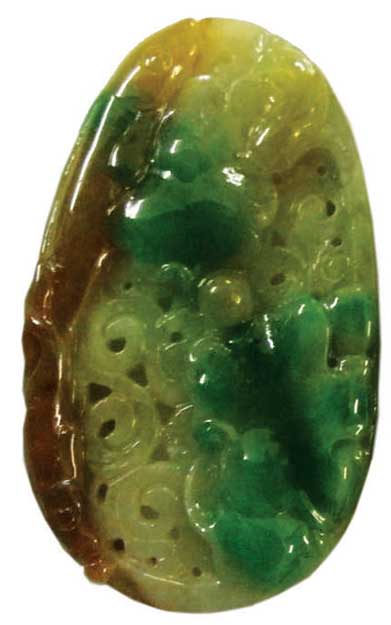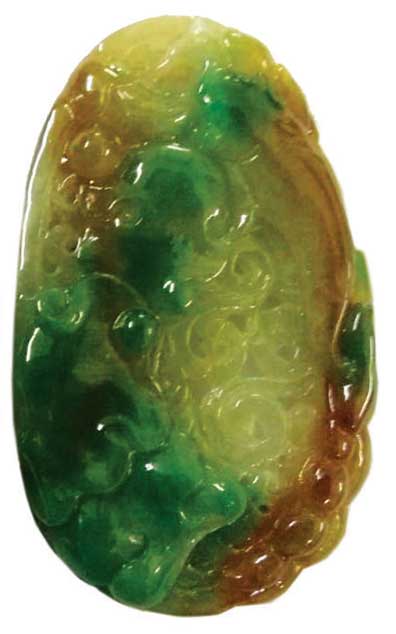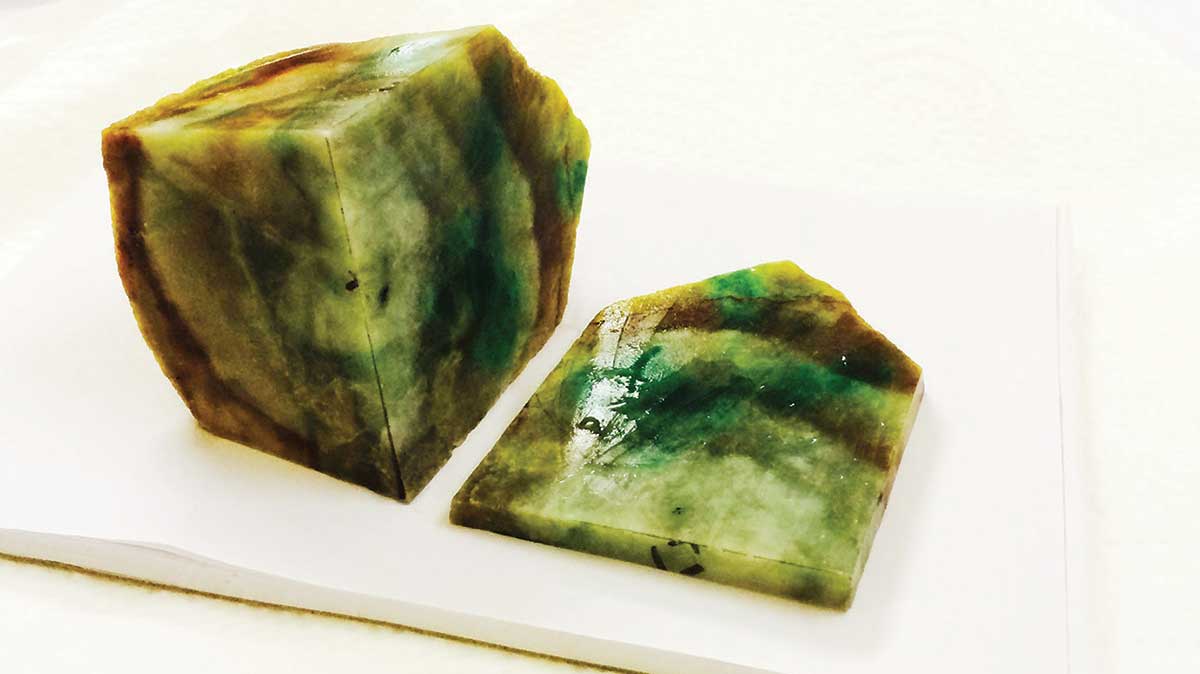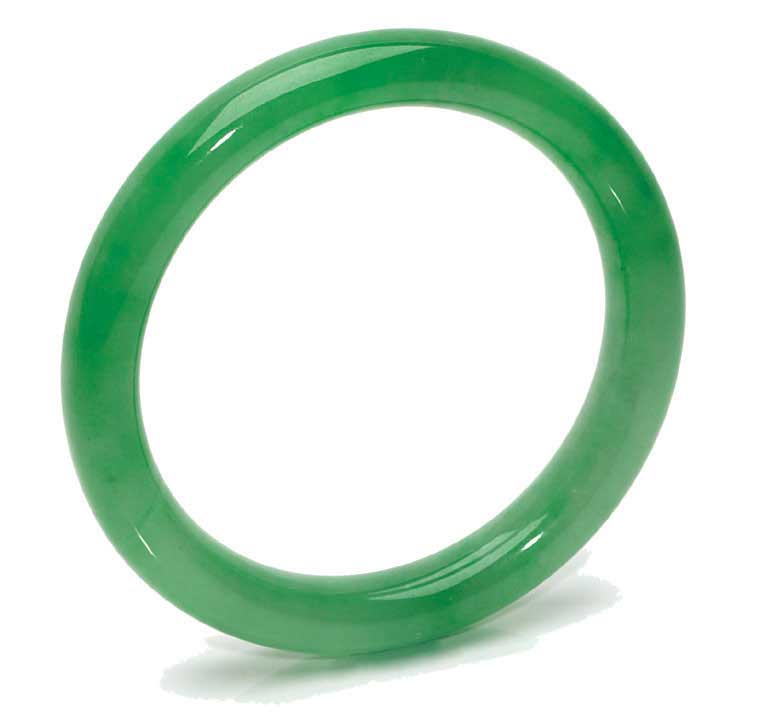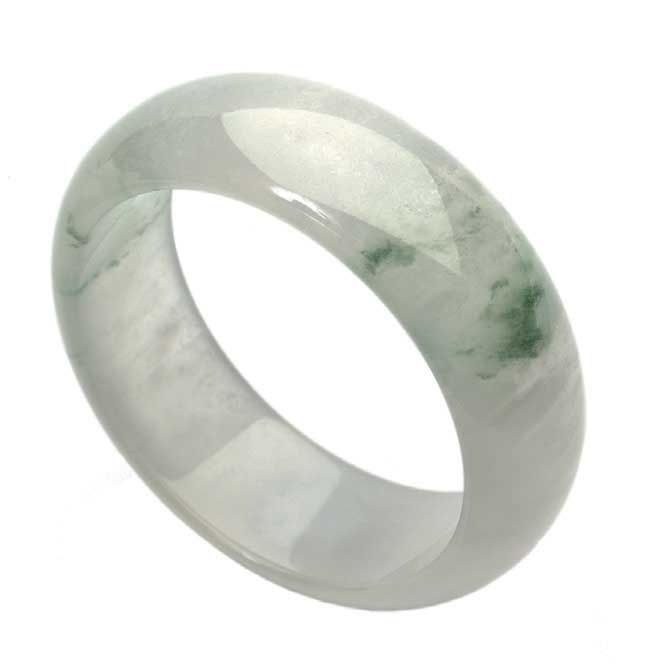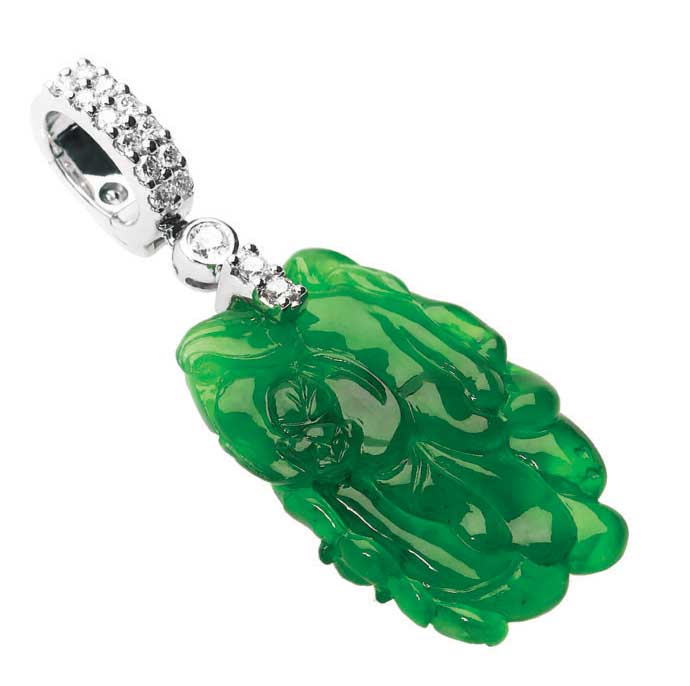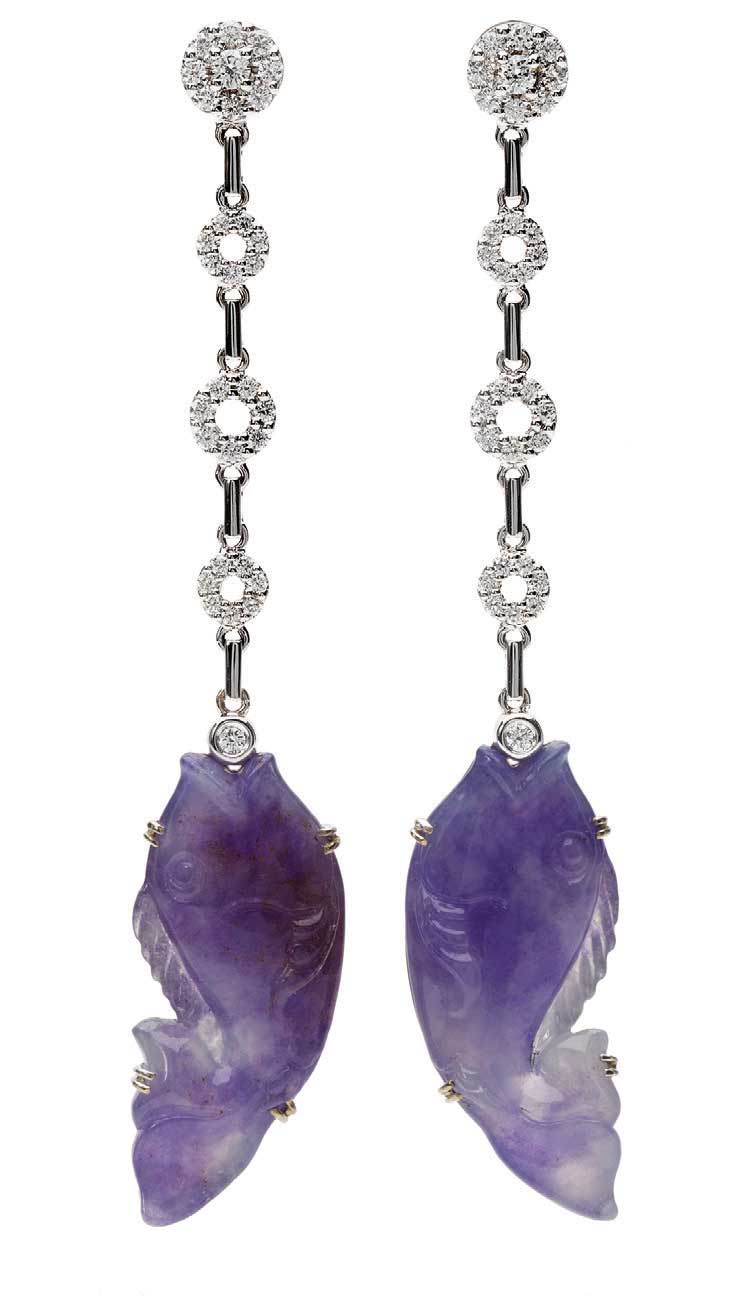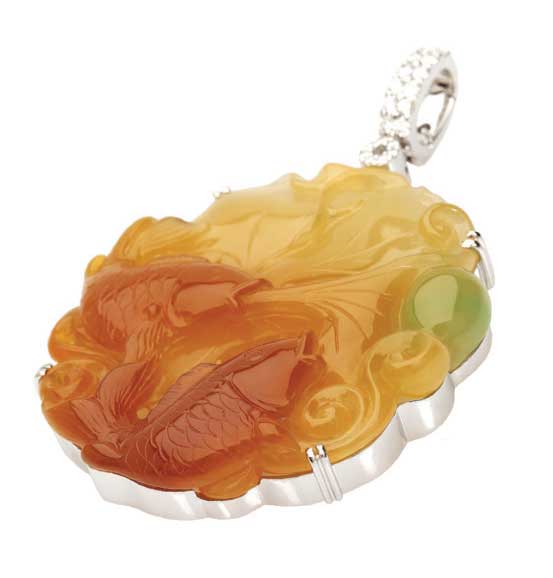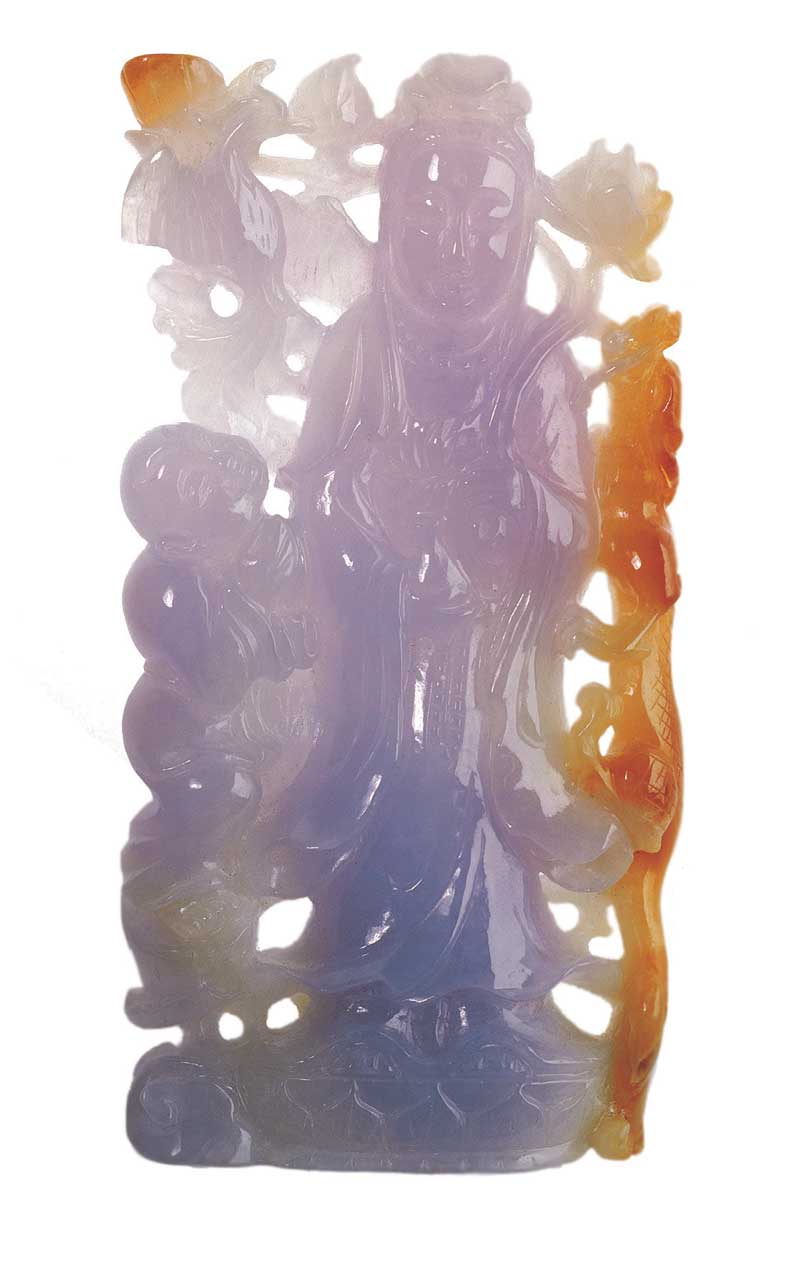Estimated reading time: 7 minutes
In China, jade is and always has been a cherished possession. With its soft luminescence and subtle translucency, this beautiful gemstone is considered to bring good fortune. Confucius described the properties of jade as embodying human virtues. Appreciation for this unique gem also extends to the West, and one of its greatest proponents is veteran jade expert, jewelry designer and collector David Lin. To learn more about how he transforms rough jade from Burma into exquisite jewelry, which is part of his Jades by David Lin story, I recently caught up with him in his office in Honolulu.
Green jadeite bead necklace with diamond clasp, green jadeite cabochon and diamond earrings, and carved green jadeite and diamond “Crane” earrings.
David Lin begins our conversation with the comment that his customers, mostly in the USA, have a great appreciation for jade, and some are even collectors. Yet, he sighs, many in the West don’t understand this remarkable gemstone or its fascinating history. He is on a mission to change all of that with the lectures he is asked to give to groups around the country as well as the beautiful jade jewelry intricate objets d’art that he designs and sells to a growing number of aficionados.
Born in Shanghai, David Lin learned the jade business from his father, T. S. Lin, a jade merchant from Southern China. “He was my teacher and mentor,” reminisces David, “and he taught me all about jadeite, from how to select the rough material, to cutting it, to designing the finished product.” What started as a hobby for the young man soon made him join his father in this second-generation family business. In 1969, the young man moved to the United States, while regularly traveling to auctions in Burma and the company’s factories and offices in China and Hong Kong.
“The art of using jade began in China more than 5000 years ago,” explains Lin. “Until at least the 13th century, the type of jade used was generally nephrite jade, which is an extremely tough stone that varies in color. Prior to discovering jadeite, the Chinese carved nephrite into ornamental pieces and tools for everyday use.”
Jadeite—considered by many to be the finest type of jade—has been “a part of Chinese culture since the late 18th century when the mines in the Hpakan area, the central jade tract in north-central Myanmar (Burma) were opened,” he adds. “For decades, these mines were inaccessible to foreigners and could only be visited by invitation.” But David was invited very early on in the 1970s by the Burmese government to attend the jade auctions where he purchased the rough stones.
Searching for great stones is exciting and Lin admits that his heart starts beating faster when he finds one. In addition to regular visits to the Myanmar jade auctions, his quest has taken him through the jungles and small villages of China, Thailand and beyond. “Jadeite has been found in many countries throughout the world, including the United States, Russia, Japan and Guatemala, but Myanmar is the principal source for premium grade jadeite,” Lin states.
When examining a piece of rough, how does he determine the quality? “At jade auctions, a buyer sometimes has only a small window, or shallow cut in the surface of the stone, through which to view the piece and determine its color, quality and texture. A large block of jade might also be cut in half, but even that does not reveal everything.”
Lin believes that it is only with a trained eye, gained through years of experience, that the right stone can be found. And, even for the most experienced, there is still a gamble. If he finds a stone that has unsurpassed color in the window, but has a crack line, he must determine how that crack line will affect the usability of the stone.
“My father used to say that the color does not travel through the crack line,” Lin recalls. “But I have learned from experience that there may be times when it does. There is a great deal to consider when buying a stone.”
David goes on to explain that the skin of the rough is another way to see the quality of the jade. “A good stone will have a certain texture and luster. If the color is beautiful, but the skin is not of high quality, then after you cut and polish it, the gem still won’t be as good as one that came from a mine with high quality rough and skin. Another factor is the stone’s hardness. If the intersection is too loose, it will shatter when you cut it.”
Once David has determined that he has found the right quality, the rough jade is sent to his factories in China to be cut by his highly skilled artisans and then transformed into beautiful jewelry.
“There are four primary factors which describe the importance of a jadeite piece—color, clarity, translucency and texture. As we search for the ideal piece, these qualities are of great importance. Other important qualities are thickness, size, shape and cut, luster and iridescence.” He points out that many jadeite stones have been treated to improve appearance and explains that a system has been developed to classify jade as: Type A (no treatment, only cutting, polishing and final waxing); Type B (soaked in chemical bleaches and/ or acids to remove impurities, followed by wax and resins impregnated into the bleached jadeite); and Type C (jadeite that has been dyed or artificially stained). “Detection of the treatment processes Once David has chosen the rough, skilled artisans take his designs to create jewels following the color patterns. This pair of tri-color jadeite earrings-to-be came from this piece of rough. often requires laboratory testing for identification,” Lin warns, emphasizing that he only uses Type A.
Does David have a color preference? “Imperial green jadeite has always been the most prized and sought-after stone by most Chinese. It reached the height of its splendor in 1784 during the reign of Emperor Qianlong, who was especially fond of imperial green jade from Burma. Only years later did people begin to appreciate the other colors. Changes in the chemical composition of the stone create a range of natural colors including green, lavender, red, yellow, gray, black, white and blue, which is in the lavender category and is the rarest color. Some of the most beautiful pieces consist of a combination of two or more colors in one piece.”
David Lin’s father is credited for introducing lavender jade into the United States at a time when green was considered to be the one true color. “High quality lavender jadeite is a rarity,” David explains. “The most common color is light and not translucent. Yet, even if light in color, a quality stone is translucent. A quality jade can also be deeper in color, while not as translucent. To have both─translucency and a darker color─is a stroke of luck.”
Once David has chosen the rough, skilled artisans take his designs to create jewels following the color patterns. This pair of tri-color jadeite earrings-to-be came from this piece of rough.
A good example of quality lavender jadeite can be seen in his fish earrings, which are both translucent and deep in color. “You can see how light plays within the lighter and deeper colors in the fish, really bringing it to life. The harmonious marriage of the jadeite’s color and its carving enhances the stone’s natural beauty in an effortless flow of color and translucency.”
Like his father who introduced lavender jade to America, David continued to carry this trendsetting torch and was among the first to introduce blue and gray jade. “Translucent gray and blue jades are among my favorite colors to work with.” He also works with black, lavender, white, red, multi-color and, of course, green jadeite.
What about design inspiration? “It all begins with the rough and visualizing the movement of color, in order to decide how to cut it,” muses Lin. He participates in all facets of the process, from the cut to the finished product. “The design makes itself visible as soon as the stone is cut,” he says. “I look for the elements of purity, integrity and simplicity. A simple design is often paramount because it shows the beauty of the stone and setting. It can hide nothing. The simpler it is, the more important is the quality of the gem and the workmanship.”
David is also mindful of his Chinese heritage and creates pieces that balance traditional Chinese motifs with modern designs. And, sometimes he incorporates antique pieces that he finds on his world travels. “My ultimate criterion is that the design, just like the stones, must have enduring beauty and elegance.”
In his quest for producing fine quality jadeite jewelry, David Lin is now joined by his daughter Katherine, as the third generation of the Lin family continues to relish jade, from rough to remarkable. Jewelry and carvings (and photos) by David Lin (jadesbydavidlin.com).



